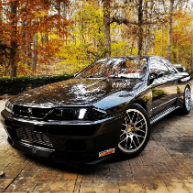No Compression Surge Or "flutter" With Blocked Bov
Announcements
-
Similar Content
-
Latest Posts
-
Well you could certainly buy or build an enclosure for a pod in that corner of the bay. It is absolutely vital that there is a nice big opening to let cold air in to it from the front or underside, otherwise it will just pull air in around the edges from the bay, and if that air is hot, you gain nothing from enclosing the pod. There is lots of good evidence around (including on here, see posts by @Kinkstaah for example) showing that pods pulling hot air from the bay is only a problem when you're static or slow in traffic, and that as soon as you get the car up and moving the air being grabbed by the pod cools down. Although that will obviously vary from car to car, whether there is a flow of cold air to the pod or if it all has to come through the radiator area, etc etc. Obviously, the whole exercise requires as much thought as anything else does. Doing the lazy thing will often end up being the dumb thing. The stock GTT airbox has a cold air snorkel to feed it from over the radiator. Shows that Nissan were thinking. The GT airbox is upside down compared to the turbo one, yeah? Inlet at the bottom, AFM/exit on the lid? That might make it harder to route the turbo inlet pipe using the GT airbox than a turbo one. That would probably be the main reason I'd consider not using it, not that it is too small and restrictive. I'm looking at a photo of one now and the inlet opening seems nice and large. Also seems to have the same type of snorkel that the turbo one has. Maybe all that's required is to make a less restrictive snorkel/cold air inlet, perhaps by punching down through the guard like I did.
-
By BuiltNotBought · Posted
I get you, we’ll see I’m aiming for 200ish kw now and hopefully 300rwkw down the line after some upgrades maybe like headstuds, E85 flex fuel etc so trying to make it final for that now, I can get a GTT airbox for $280 so it’s not too bad but not sure if there’s better ways to spend that money. I seen online they say pod filter which isn’t enclosed isn’t good especially for a plus T. hard to say what to do -
Meh. How much power can you make from a +T anyway? I wouldn't have though it would be enough to challenge the airbox. It's not as if it's tiny compared with the turbo one. As to putting a pod in a stock airbox .... it's not the filter element that would be restrictive. It would be the air inlet to the box that would be the narrow point, which you could open up regardless of what element was inside. On my R32 I opened up the sort of triangular opening in the bottom front corner of the box, deformed (heated, moulded) some 4" stormwater pipe to fit to that opening and punched a 4" hole down through the inner guard to the spot where the stock intercooler used to be. This was purely in the search for a cold intake, but you could do something similar if you need to open up the inlet side of it. The AFM tube size is the same for both NA and turbo, so the outlet from the airbox is same same anyway. If you're going to do the right thing, then an aftermarket ECU won't care about the AFM (ie, you can get rid of it). But even if it was still there, people pull >300rwkW through them all day, and I suspect you won't be going there.
-



Recommended Posts
Create an account or sign in to comment
You need to be a member in order to leave a comment
Create an account
Sign up for a new account in our community. It's easy!
Register a new accountSign in
Already have an account? Sign in here.
Sign In Now